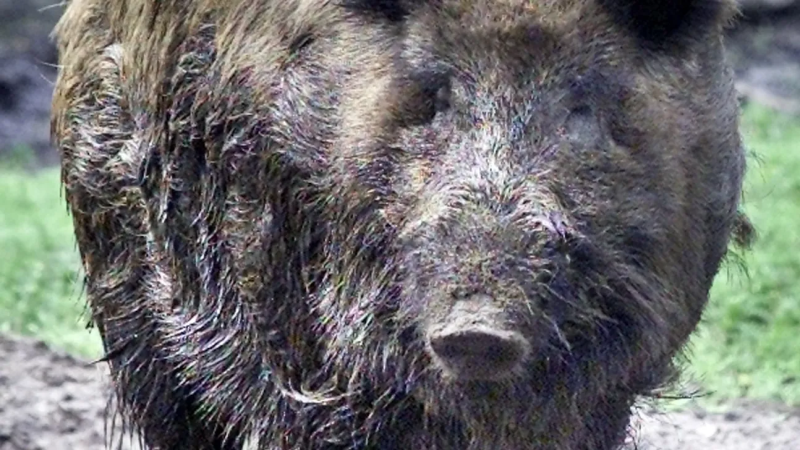Hog wild problem: These states are working to limit feral swine populations
State legislators across the country are looking to limit the population of wild hogs and the damage caused by these massive creatures. Wild hogs are also called feral swine and are the same species as domesticated pigs found on farms.
Ohio is one of several states to vote on legislation that would prohibit ownership of wild pigs. If Ohio's bill becomes a law, bringing a wild pig into the state could result in a $500 fine. The bill would also allow landowners to shoot the feral swine without a license, according to reporting from the Columbus Dispatch, part of the USA TODAY Network. Hunters would be required to report the harvest to state officials.
Kentucky, Tennessee and Washington are among the states that already ban possession of these animals.
So far, feral swine can be found in eight of Ohio's 88 counties.
Kentucky is going one step farther to limit its wild hog population. The state is finalizing a ban on private hog hunting, in order to more easily track and capture the pigs.

According to the U.S. Department of Agriculture, feral hogs cause approximately $2.5 billion in agricultural damages each year.
Since their introduction to North America in the 1500's, the feral swine population have expanded across more than three quarters of the country. According to the Department of Agriculture, their population has grown to more than 9 million.
The wild animal has expanded westward and northward, with states like California, Hawaii, and Michigan reporting fairly large feral hog populations.
Which states are most impacted by wild hogs?
Florida, Georgia and Texas have the most feral hog reports in the U.S, according to data from the University of Georgia Center for Invasive Species and Ecosystem Health.
In 2023 alone, Texas had 2,425 feral hogs reported, followed by 1,377 in Georgia.
Fifteen states had no feral hog sightings last year.
Feral hogs disrupt native species
The animal’s range has expanded more westward and northward over time, with at least 35 states reporting feral swine presence. States including California, Hawaii, and Michigan now have relatively large feral hog populations.
Nearly 300 native plant and animal species in the U.S. are in rapid decline because of feral swine, and many of the species are already at risk, according to Animal and Plant Health Inspection Service.
The swine also carry at least 40 parasites, 30 bacterial and viral illnesses, and can infect humans, livestock and other animals with diseases like brucellosis and tuberculosis.
Managing the feral hog problem
In some states, total elimination of feral hogs is the end goal for conservationists.
The Missouri Feral Hog Elimination Partnership killed 9,857 feral hogs in 2021, bringing the total number of hogs killed since 2016 to more than 54,000.
Public hunting is one of the most popular mitigation tactics of wild hogs and has become a common recreational activity. But hogs often relocate in response to pressures of hunting. Fencing and trapping can be more effective in mitigating wild hog populations, but require more upkeep and investment, according to Captain Experiences.
Disclaimer: The copyright of this article belongs to the original author. Reposting this article is solely for the purpose of information dissemination and does not constitute any investment advice. If there is any infringement, please contact us immediately. We will make corrections or deletions as necessary. Thank you.






